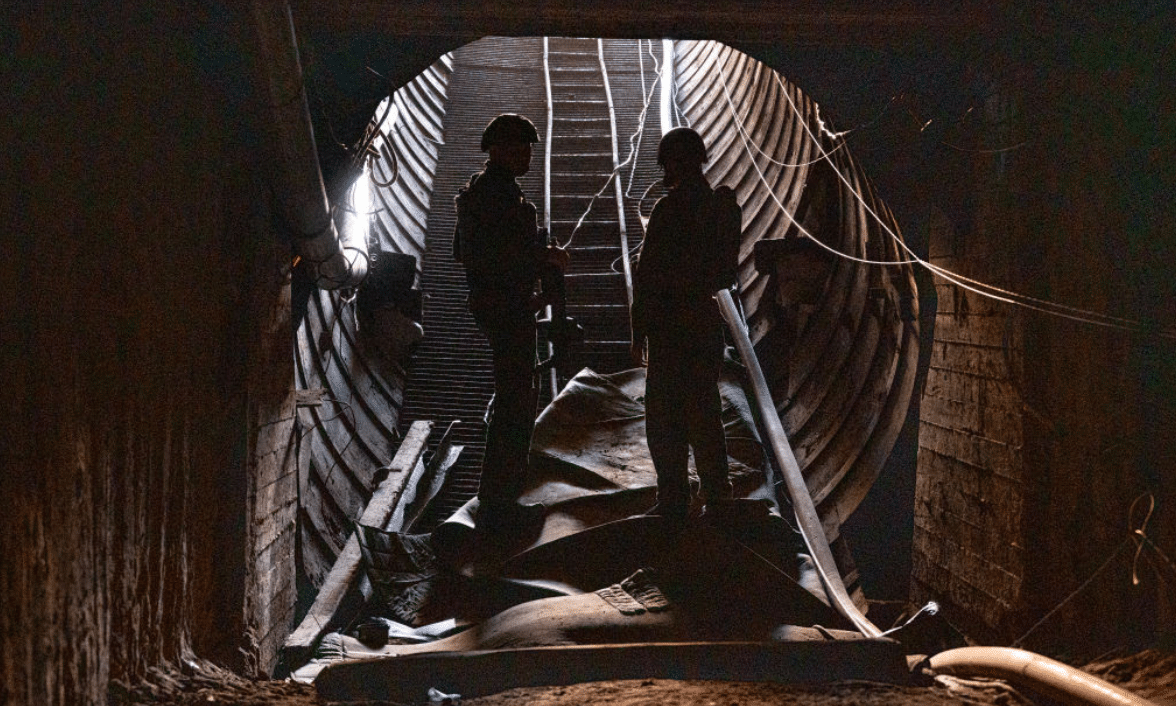It’s been seven years since I escaped my embattled city of Gaza and came to the U.S. On Thanksgiving, my mother sent me a photo of a felled 16-ft. tree in southern Gaza, where my family has been sheltering these last weeks. Ten of my relatives are standing on asphalt, surrounding the trunk, and one of them is hacking off its limbs. It’s impossible to obtain cooking gas, and this tree is now the firewood that will allow them to prepare their next meal.
Since Hamas’s atrocious attacks on Oct. 7—leaving around 1,200 people dead, the largest mass killing of Jews on a single day since the Holocaust—the systems that supply Gaza’s food, water, and medicine are in urgent decline as Israel carries out its ongoing bombardment of Gaza in return. At least 27,000 Palestinians have died since, thousands of whom are reportedly Hamas fighters, and some 1.7 million of Gaza’s 2.3 million people displaced along with tens of thousands of Israelis by ongoing rocket fire from Hezbollah in southern Lebanon. Much of Gaza is now reduced to rubble. But the sense of disorder and emergency in the Strip today stretches much further into the past.
Since Hamas’s violent takeover of Gaza in 2007, the bustling and beautiful streets I knew have been dominated by terrorist chaos. Hamas is driven by an ideological stand originating in the concept of annihilating the state of Israel and replacing it with an Islamic Palestinian one. In striving to make this a reality, Hamas has continued to normalize violence and militarization in every aspect of public and private life in Gaza. They have in the process obliterated the chances of a successful Palestinian state alongside Israel, even if the prospect of one had increasingly looked dim amid successive Israeli governments that worked against that.
We lived in my father Imad’s family building and saved money for nearly 18 years until we were able to build our own house in the north of Gaza. The first sign that Hamas was building tunnels underneath our house came in July 2013, while the house was under construction. Our soon-to-be new neighbor, Um Yazid Salha, got in touch with my mother Saadia to ask why my brother Hamza and I always come to the site after midnight.
[The Time Report continues]
The day after we inspected the house, Um Yazid called to say that the men had returned in the night. My mother didn’t want me to go, but I put on my clothes and headed alone to the unfinished home. When I reached the iron door of the house, I began to hear the movement of people inside. I knocked on the door. A masked person opened the door and asked me to step back a bit. Then he closed the door behind him and asked who I was. I defiantly told him that I am the owner of the house. “Who are you?” I asked.
Meeting masked men is something we are used to in different aspects of Gazan life. We argued. I told him my uncle, who was a member of Hamas and prosecutor in its government, would stop them from building a tunnel. The masked man insisted they would continue as they pleased. He said I should not be afraid and that this would just be a small closed room to remain buried underground. No one can enter or exit. He said that only in the case of an Israeli ground invasion in this area and the displacement of residents would these rooms be used to supply weapons.
“We don’t want to live above a stockpile of weapons,” I told him, just before he forced me to leave.
[The Time Report continues]
When something goes unspoken for so long, it begins to feel impossible that the truth will ever be known. I always looked forward to a time in the future when my family and others like us would be allowed to speak about these tunnels, about the perilous life Hamas has forced upon Gazans. Now that I am determined to speak openly about it, I don’t know if it even matters.
My family evacuated to the south shortly after Oct. 7. Months after, we received photos of our house and neighborhood, both of which are in ruins. I may never know if the house was destroyed by Israeli strikes or fighting between Hamas and Israel. But the result is the same. Our home, and far too many in our community, were flattened alongside priceless history and memories.
And this is the legacy of Hamas. They began destroying my family home in 2013 when they built tunnels beneath it. They continued to threaten our safety for a decade—we always knew we might have to vacate at a moment’s notice. We always feared violence. Gazans deserve a true Palestinian government, which supports its citizens’ interests, not terrorists carrying out their own plans. Hamas is not fighting Israel. They’re destroying Gaza.
View this Time Report from February 13th

